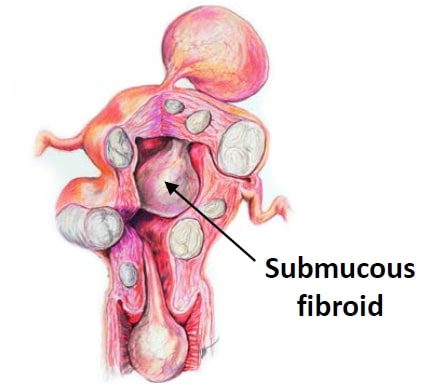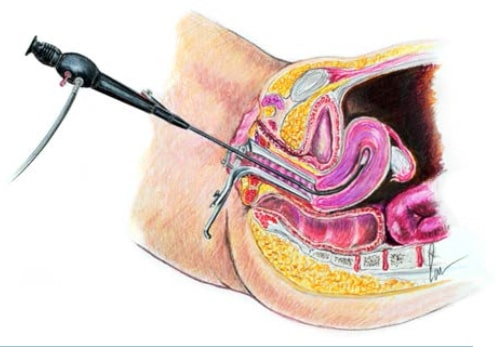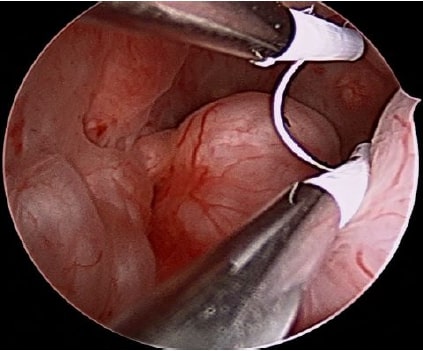Hysteroscopic Myomectomy
Uterine fibroids (also called myomas) are benign (non-cancerous) tumors that originate in the uterus and are made primarily of muscle tissue. Fibroids are the most common pelvic tumor in women and vary widely in size, number, and location within the uterus. If fibroids are located partially or totally inside the uterine cavity (where menstrual bleeding occurs) then they are called submucous. Approximately ten percent of all fibroids are the submucous type.
Submucous fibroids can cause heavy menstrual bleeding, painful menstrual periods (dysmenorrhea or cramps), and are a common cause of infertility (inability to become pregnant). Hysteroscopic myomectomy is the technique of removing uterine fibroids from inside the uterine cavity. This is performed under direct vision with the use of a small camera called a hysteroscope. It is a safe and effective procedure with minimal or no damage to the normal tissue of the uterus.
Why is hysteroscopic myomectomy performed?
By the time a woman is 50-years-old, she will have about a 50% chance of having fibroids. This likelihood can be higher for women in families with other female relatives who also have fibroids, such as a mother or sisters.
A gynecologist with specialized training or interest performs a hysteroscopic myomectomy. Specialized instruments such as a loop with electricity or a mechanical cutting device are used with the hysteroscope to remove submucous myomas.
A woman may want to consider having a hysteroscopic myomectomy if she has the following symptoms:
Top illustration: A uterus with different types of fibroids. Bottom illustration: A cross section of the hysteroscope (camera) looking into the uterus


What are the risks of hysteroscopic myomectomy?
Every procedure will have some risk, or possibility of having a complication or bad outcome. Hysteroscopic myomectomy takes place entirely inside the uterine cavity and therefore has less risk to the patient than other types of surgeries that also treat fibroids. Some of the risks of hysteroscopic myomectomy include the following:
What should I expect after surgery?
Because the entire procedure is performed inside the uterine cavity, symptoms after surgery are minimal. Generally, these symptoms will only last for several hours to a day or two after the procedure. Common symptoms after hysteroscopic myomectomy include the following:
When should I call my doctor?
Serious complications following hysteroscopic myomectomy are not likely to happen. However, notify your surgeon if you experience any the following symptoms:

